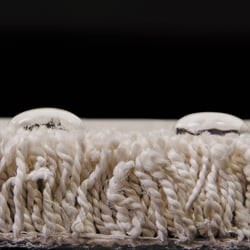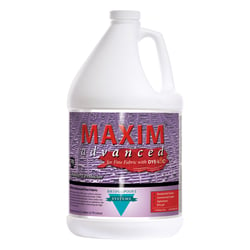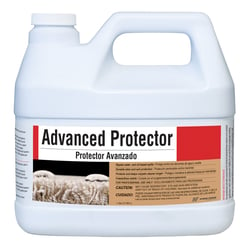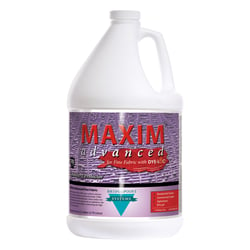Let's start with an obvious but important fact; fabric protection is one of the most profitable services a cleaner can perform. It's not uncommon for a cleaner to make in excess of $600 per hour applying fabric protection. The industry average is approximately $400 to $600 per hour. If you consider how easy it is to apply, it probably is the most profitable service one can perform.
Fabric protection has been in existence for decades but has gone through many changes and improvements over time as technology has improved. To fully understand where we are, it's probably good to understand where we came from.
The Evolution of Protectors
Protectors were developed to give textiles resistance to water, oil, and dry soils. These soils can stain or prematurely wear down fabrics and fibers so it was important to protect them and prolong their life expectancy. In addition, a quality protector makes fibers easier to clean and maintain.
Colloidal Silica
Early on the industry experimented with silica-based protectors. These protectors were not very practical. They only protected against dry soils and had little to no resistance to water or oil-based soils, and they wore off quickly. These were typically inexpensive and were used by some that had to bid on jobs where the protector was included in the price.
Silicone
The industry then began to push silicone-based protectors. Silicones had very good resistance to water-based soils but had no resistance to oil and dry soils stuck to them like glue. These were great for your tent or raincoat but horrible for your carpet and upholstery. It wasn't uncommon to hear consumers say, "Don't get your carpet protected. I think it makes it get dirty quicker''. Chances are they experienced a silicone-based protector in the past. Today, silicone-based protectors are specifically excluded from carpet manufacturer's warranties on 5th generation nylon (the most commonly sold residential carpet fiber).
Fluorochemicals
The shortcomings of silica and silicone led to the evolution of the fluorochemical. The use of Fluorochemicals in fabric protection was a quantum leap forward because it is basically an inert chemical. It has all of its own properties so it mixes with nothing and therefore repels everything. Because of this ability, it gives tremendous resistance to water, oil, and dry soils. However, carpets, particularly nylon and wool, were still very sensitive to acid dyes if left without proper and immediate attention.
Acid Dye Resistor
Acid dye resistors were developed to guard against the staining caused by acid dyes from foods and fluids. These are basically clear colorless dyes that fill up the dye sites in nylon to repel acid dyes. The fluorochemical resin is what provides the rest of the protection against other soils.
The best carpet protectors today are those that basically return the carpet to "like new" condition. By re-applying a fluorochemical coating containing an acid dye resistor, you are renewing the treatment that originally came with the carpet (specifically Nylon). Many manufacturers offer stain-resistant warranties on their goods due to this application. The acid dye resistor has tremendous benefit to more absorbent materials such as nylon or wool but may have little to no effect on solution-dyed fibers such as olefin or polyester.
Some protectors may not contain acid-dye resistors but are still very good. They may have a higher concentration or different type of fluorochemical that creates a greater difference in the surface tension of the liquid (spill) and the surface tension of the fabric/ fiber (makes the liquid bead up). This keeps the foreign material from absorbing into the fiber. These are ideal for upholstered fabrics and other sensitive goods. Fabrics harmed by water are served best by solvent-based fluorochemicals.
Over time fluorochemicals have faced some regulations. States which have laws regulating the levels of volatile organic compounds have banned their use in California or restricted the formula in 18 other states. The EPA has also limited the length of the carbon chain from C8 to C6 over a number of years. C8 fluorochemicals have not been able to manufacture this version since 2015. Supplies of C8 have been essentially used up by the date of this writing.
by Scott Warrington
Featured Products


Hydro-Force Carpet Protector Advanced Protector, 1 Gallon

Bridgepoint Systems Upholstery Cleaning Maxim Advanced for Upholstery Protector with Dye-Loc, 1
